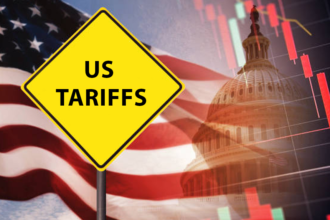One of the most well-known stores in the United Kingdom has been seriously disrupted by the recent Marks & Spencer cyberattack, which affects consumers all around and causes a big financial loss. This blog offers a thorough overview of the consequences of the cyberattack, the company’s continuous efforts at recovery, and important lessons for other businesses trying to improve their cybersecurity defenses.
What happened during the Marks & Spencer cyberattack?
Marks & Spencer became victim of a highly advanced cybercrime aiming at its digital infrastructure over the Easter weekend. The attack immediately interfered with basic services including contactless payment options and click-and-collect, services many consumers depend on for convenience and security.
Customers trying to use the M&S website almost immediately following the hack came across a message warning them the site was under temporary unavailability for browsing or ordering and was under updates. Many were unable to shop online due to this unexpected disturbance, which annoyed devoted consumers and created operational problems for the business.
The length of the disturbance in this cyberattack makes it especially noteworthy. While many businesses can restore systems in a few hours or days, M&S’s online presence has stayed underwhelming for several weeks. The outage also affected some foreign M&S websites, exposing the broad consequences of the hack.
The extended downtime emphasizes the complexity and scope of the Marks & Spencer cyberattack, which was not a straightforward malware infection but rather a targeted intrusion into the company’s network, requiring significant efforts to investigate, contain, and repair. Read another article on Quick Commerce India Retail
How Has the Marks & Spencer Cyberattack Affected the Company?
The effects of the cyberattack on Marks & Spencer go beyond mere operational disturbance. Financially, the incident has caused the company to project a notable drop in its profitability this year. About one-third of the retailer’s expected annual earnings are thought to be lost, roughly £300 million.
This amount emphasizes the seriousness of the attack and much surpasses the initial expectations of the market. M&S has insurance, but it is abundantly evident that the reimbursement will just cover a part of the financial losses.
Apart from the financial effect, the hack led to personal customer data theft. Details like phone numbers, home addresses, dates of birth, and online order histories were obtained even though payment card information and passwords were not hacked. Customers have naturally been worried about the possible use of their data.
Such a data breach can cause significant long-lasting damage to reputation. Major brands are expected by consumers to provide strong security, hence mistakes in this area could destroy confidence. M&S thus must restore operational capability as well as establish customer confidence simultaneously.
What Action Marks & Spencer Is Taking to Recover?
The leadership of Marks & Spencer has been open on the continuous process of recovery. CEO Stuart Machin verified that the business is handling a “highly sophisticated and targeted cyberattack” requiring deliberate and calculated reactions.
M&S has promised to progressively reopen its online services; a complete return to normal by July is planned. This longer schedule shows the company’s careful approach to guarantee completely secure systems before launching once more.
Apart from technological recovery initiatives, M&S is closely working with law enforcement authorities. Investigations indicate a well-known English-speaking hacker organization called “Scattered Spider,” which has also been connected to like attacks on other stores, including the Co-op and Harrods.
Not only for M&S but also for the larger retail sector, which remains a main target for cybercriminals, identifying and reacting to such criminal groups is vital. Read another article on De Minimis Exemption Impact on Retail
Why Should Companies Examine the Marks & Spencer Cyberattack?
The Marks & Spencer cyberattack serves as a wake-up call for businesses of all kinds, showing how even large, well-known corporations with great resources remain susceptible to cyberattacks.
It emphasizes first the need for funding sophisticated cybersecurity systems. Detecting and stopping advanced breaches before they become more serious depends on ongoing monitoring, frequent security audits, and current software defenses.
Second, the attack emphasizes the need of thorough incident reactions. Businesses have to respond fast to contain harm, let clients know straight forwardly, and resume operations as soon as breaches happen. Confusion or delays could aggravate damage to reputation as well as financial one.
Third, it underlines the need for cooperation. Companies should exchange threat intelligence and coordinate defenses against coordinated cybercrime networks by closely working with cybersecurity specialists, law enforcement, and industry colleagues.
At last, the event emphasizes the need of closely safeguarding consumer information. M&S was able to prevent the theft of passwords and payment data, but compromise of other personal data still carries dangers. Companies should examine data storage policies, restrict access to private data, and, when at all feasible, apply robust encryption and anonymizing techniques.
What can Businesses and Customers do right now?
Following any cyberattack involving personal data, customers should be alert. Important behaviors are keeping an eye on bank statements, routinely changing passwords, and being wary of phishing efforts.
Regarding companies, the lessons are obvious. In the modern digital scene, proactive cybersecurity strategies—including personnel training and investment in advanced tools—are non-negotiable. Moreover, a well-defined, tested strategy for handling breaches will help to greatly lessen the negative effects of such incidents.
The Marks & Spencer cybercrime shows how attackers take advantage of weaknesses and the difficulties in recovering. Still, it also demonstrates how well businesses can reduce risks and come out stronger with good preparation and execution.
Finish
The Marks & Spencer hack serves as a sobering reminder of the changing cyberspace and the major hazards it presents to stores and other companies. The disturbance of M&S’s activities and the significant financial loss highlight the need of cybersecurity in safeguarding consumer confidence as well as business assets.
Examining the effects and reaction to this attack can help companies choose important lessons about recovery, readiness, and avoidance. Building resilience in an increasingly linked society requires first investments in strong cybersecurity defenses, defined crisis response plans, and official government collaboration.
Other businesses should pay attention and give their cybersecurity initiatives a priority, as M&S aims for a complete recovery by July avoid such expensive disruptions.








